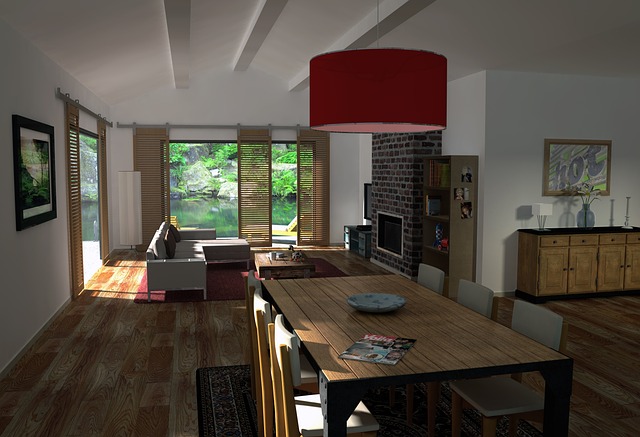CAD-based 3D rendering streamlines clash detection and coordination in construction, enabling early identification of structural and MEP system conflicts through photorealistic digital twins, enhancing efficiency, communication, and project harmony by visualizing complex design elements in a unified space.
In the realm of construction, clash detection and coordination between structural and MEP (Mechanical, Electrical, Plumbing) systems are paramount to project success. This article explores effective strategies, from CAD-based 3D rendering for visual coordination, to identifying conflict points in structural systems, and avoiding MEP integration pitfalls in complex spaces. Discover advanced techniques fostering seamless system collaboration, revolutionizing the way projects are planned and executed.
Integrating CAD-based 3D Rendering for Visual Coordination
Integrating CAD-based 3D rendering into clash detection and coordination processes offers a powerful visual tool for architects, engineers, and contractors. By creating digital twins of buildings, this technology allows for a comprehensive visualization of structural and MEP (mechanical, electrical, and plumbing) systems in a unified space. With such detailed models, professionals can identify potential conflicts early in the design phase, enabling prompt resolution and enhancing overall project efficiency.
This rendering process involves advanced software that generates precise, photorealistic images of the proposed construction. It seamlessly integrates various system components, revealing potential interference between structural elements, MEP runs, and other building features. This visual representation facilitates better communication among project stakeholders, ensuring everyone is aligned with the latest design iterations and any necessary adjustments.
Structural Systems: Identifying Clash Points Visually
In the realm of construction, clash detection is a critical process that ensures structural integrity and seamless coordination among various systems, including Structural and MEP (Mechanical, Electrical, and Plumbing). One of the most effective methods to visually identify potential clash points within structural systems is through CAD-based 3D rendering. This innovative approach allows professionals to transform complex building designs into tangible digital models, enabling them to spot conflicts early in the design phase.
By utilizing 3D rendering software, architects and engineers can create detailed visualizations of structural components, such as beams, columns, and walls, interwoven with MEP systems like pipes, electrical conduits, and wiring. This holistic view facilitates the identification of scenarios where structural elements might interfere with MEP installations, ensuring that any conflicts are resolved before construction begins, thereby saving time, money, and potential headaches down the line.
MEP Integration: Avoiding Conflicts in Complex Spaces
In complex architectural spaces, integrating Mechanical, Electrical, and Plumbing (MEP) systems with structural elements requires meticulous planning to avoid clashes. CAD-based 3D rendering offers a powerful tool for visualizing and coordinating these intricate interplays. By creating digital models that accurately represent both structural components and MEP layouts, designers can identify potential conflicts early in the project phase. This proactive approach allows for informed decision-making, minimizing costly rework later on.
Through simultaneous manipulation of both systems within a unified 3D environment, engineers and architects gain a holistic understanding of how each element interacts. This visualization enables them to detect potential interferences between pipes, wires, and structural supports, ensuring a smoother construction process and a more harmonious final product.
Advanced Techniques for Seamless System Coordination
In today’s complex construction projects, seamless coordination between structural and MEP (Mechanical, Electrical, Plumbing) systems is non-negotiable. Advanced techniques, such as CAD-based 3D rendering, play a pivotal role in achieving this harmony. By visualizing the entire project in a unified digital environment, architects, engineers, and contractors can identify potential clashes early in the design phase. This proactive approach allows for informed decision-making, ensuring that structural elements do not interfere with MEP installations and vice versa.
The integration of CAD software enables real-time collaboration and accurate updates, minimizing errors and revisions. Through this process, every component is precisely positioned, considered, and optimized, leading to a more efficient construction process and a reduced risk of costly delays or rework. This level of coordination is particularly crucial in dense urban areas where space is limited and precision is paramount.
In conclusion, the seamless integration of structural and MEP systems is paramount for successful construction projects. By leveraging advanced techniques like CAD-based 3D rendering, professionals can achieve visual coordination, identify clash points early on, and avoid costly conflicts in complex spaces. This approach not only streamlines the design process but also ensures a more efficient and error-free construction, ultimately leading to higher quality buildings.
